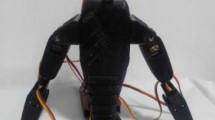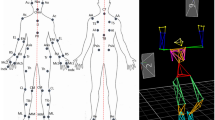Abstract
The effect of gravity should be considered when using isokinetic devices to measure human movement performance. In most isokinetic dynamometers gravity compensation is controlled by software through a gravity correction option. However in some complex research protocols the dynamometer signal acquisition and processing capability is not adequate to effectively synchronize or process a wide range of captured signals. Therefore when the force/torque signals from a commonly used dynamometer such as KIN-COM® are interfaced into a signal processing workstation such as AMLAB®, it is necessary to further process the received raw signals for gravity correction. The aim of this study was to evaluate the effectiveness of an AMLAB®-based instrument designed for gravity compensation of raw torque signals acquired from a KIN-COM® dynamometer. To check the accuracy of weight compensation within the AMLAB® environment, torque signals produced by a known weight during a 180-degree range of KIN-COM® lever arm movement were compared with and without weight compensation. The results indicated that this technique is an accurate means for weight compensation when raw torque signals from a KIN-COM® dynamometer are interfaced to an AMLAB® workstation.
Similar content being viewed by others
References
Winter, D. A.; Wells, R. P. and Orr, G. W.Errors in the use of isokinetic dynamometers, European Journal of Applied Physiology. 46:397–408, 1981.
Dvir, Z.Hardware, test parameters, and issues in testing, In Isokinetics, muscle testing, interpretation and clinical applications. Churchill Livingstone, Edinburgh,79, 1995.
Figoni, S. F., Christ, C. B. and Massey, B. H.Effects of speed, hip and knee angle and gravity on hamstring to quadriceps torque ratios. Journal of Orthopaedics and Sports Physical Therapy. 9:287–291, 1988.
Mayhew, T. P., Rothestine, J. M. Finucane, S.D.G., and Lamb, R. L.Performance characteristics of the KIN-COM dynamometer. Physical Therapy. 11:1047–1054, 1994.
Fillyaw, M., Bevins, T. and Fernandez, I.Importance of correcting isokinetic peak torque for the effect of gravity when calculating knee flexor to extensor muscle ratios, Physical Therapy. 66:23–29, 1986.
Herzog, W., Hasler, E. and Abrahamse, S. K.A comparison of knee extensor strength curves obtained theoretically and experimentally, Medicine and Science in Sports and Exercise. 23 108–114, 1991.
Leeuw, G. H., Stam, H. J. and Nieuwen-huyzen, J. F.Correction for gravity in isokinetic dynamometry of knee extensors in below knee amputees, Scandinavian Journal of Rehabilitation Medicine. 21:141–145, 1989.
Nelson, S. G. and Duncan, P. W.Correction of isokinetic and isometric torque recordings for the effects of gravity, Physical Therapy 63:674–676, 1983.
Appen, L., Duncan, P. W.Strength relationship of the knee musculature: Effects of gravity and sport, Journal of Orthopaedics and Sports Physical Therapy. 3:232–235, 1986.
Finucane, S. D. G., Mayhew, T. P. and Rothstein, J. M.Evaluation of the gravity-correction feature of a KIN-COM isokinetic dynamometer, Physical Therapy. 74:1125–1133, 1994.
Keating, J. L. and Matyas, T. A.Method-related variations in estimates of gravity correction values using electromechanical dynamometry: A knee extension study, Journal of Orthopaedics and Sports Physical Therapy. 3:142–153, 1996.
Jaberzadeh, S., Nazeran, H., Scutter, S. and Warden flood, A.An integrated AMLAB®-based system for acquisition, processing and analysis of evoked EMGand mechanical responses of upper limb muscles, Australian Physical and Engineering Science in Medicine. 26:70–8, 2003
AMLAB® Reference Manual, for AMLAB®, release 2.0, 1997.
AMLAB® User Manual, for AMLAB® release 2.0, 1997.
Author information
Authors and Affiliations
Corresponding author
Rights and permissions
About this article
Cite this article
Jaberzadeh, S., Nazeran, H., Scutter, S. et al. Compensation of limb weight on interfaced raw torque signals from a KIN-COM® dynamometer to an AMLAB® Workstation. Australas. Phys. Eng. Sci. Med. 27, 69 (2004). https://doi.org/10.1007/BF03178379
Received:
Accepted:
DOI: https://doi.org/10.1007/BF03178379




